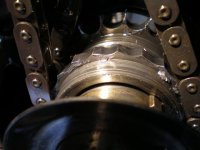Offline
The switch is hydraulicly activated, yes. Fluid will escape and re-bleeding the system is likely necessary if you remove it. Clean around the base of the switch with a small brass wire brush, lessens the chances of foreign stuff getting into the lines and allows application of some loose-juice. There should be a copper washer at the base of the switch as well, IIRC. Should be replaced. A good (and cheap) penetrating concoction in lieu of commercial brews is a 50/50 mix of acetone and ATF, shake and apply, pause and repeat. Tho it is likely you will have no issue removing that switch.
If you're quick (and somwhat lucky :wink: ) you will be able to swap the new one in and start the threads without loss of too much fluid. I'm never too lucky with getting threaded leaking things started... be aware most brake fluids will EAT paint, too. Wash/rinse the drippage with water soon after the job.
If you're quick (and somwhat lucky :wink: ) you will be able to swap the new one in and start the threads without loss of too much fluid. I'm never too lucky with getting threaded leaking things started... be aware most brake fluids will EAT paint, too. Wash/rinse the drippage with water soon after the job.

 Hi Guest!
Hi Guest!

 smilie in place of the real @
smilie in place of the real @
 Pretty Please - add it to our Events forum(s) and add to the calendar! >>
Pretty Please - add it to our Events forum(s) and add to the calendar! >> 



